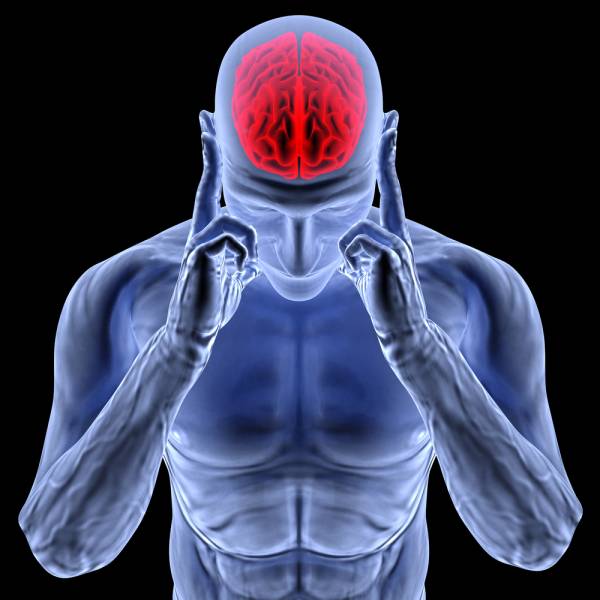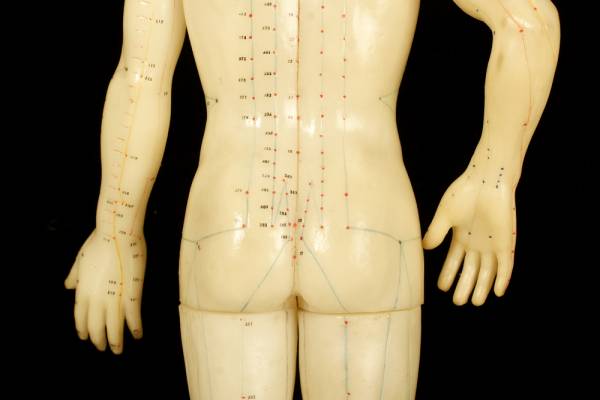I’ve been working on freestanding handstand push ups. If you’ve never tried them before, they’re quite the combo of strength and skill. Not only do you have to press up your entire bodyweight, but you must also do it while staying balanced on your hands. Although I had been working on them on and off for over a year and could consistently do one, I was never able to do anymore than that. The move was too hard.
Finding the Breakthrough
That was until that one breakthrough workout. I realized the only reason I couldn’t do more than one rep was because I was stuck in a mental box. I believed that freestanding handstand push ups were hard and that I couldn’t do more than one – so it was manifested in my reality. This belief came about through my experience of the exercise being difficult and a lot of work to achieve even that one complete rep.
After this realization, I started tapping on my body at specific points and saying, “Freestanding handstand push ups are hard and I can’t do more than one at a time.” I repeated this over and over before shifting to the positive. “I got this. I can do more.” (Had this been a deeply seated belief, it would have taken more work, but in this case it was easy to transform.)
Once I had finished tapping I kicked up into a handstand and dipped down twice, just as easily as I had done singles before. I was excited but I knew there was more. I went for it again and did another double. I followed this up with another round of tapping to help open up the possibilities even further.
On my next set I hit a triple.
Using Emotional Freedom Technique (EFT)
I went from one to three reps by removing a mental block that stood in my way. The tool I used to remove it is called Emotional Freedom Technique, or EFT for short. Since that time I’ve shared this technique with many of my clients, helping them to hit all kinds of personal records, as well as accomplish much else.
EFT is the most well known form of energy psychology, a self-help and psychological tool that has become quite popular in the past few years. In this series of articles, I’ll introduce you to the technique, explain how to do it, and show you the many ways it can help you out.
EFT Can Accelerate Healing
EFT is typically used to work on emotional traumas like phobias and childhood events. Many psychologists use the technique because it gets faster and better results than many other methods. But its use is not limited to psychologists or even trauma. I am not a psychologist myself. And while that stuff is great, I’m always looking for the edge to help me get stronger. What I have found is that EFT is a great tool for getting better results in the gym and in sports. While other people have used it for this purpose it is one of the lesser-explored areas.
One of the things that hold people back from achieving their goals in the gym is injury. EFT can help greatly here. Injuries aren’t just physical, but have a mental-emotional component to them, as well. When this mental aspect is dealt with a person can greatly accelerate the healing of an injury. In fact, sometimes it seems like the emotional trauma is the only thing holding the injury in place.

I know. It sounds too good to be true. It sounds woo-woo. But when you see it work like that you can’t deny it. I worked with one woman on a chronically bad shoulder she had for seven years. After a half-hour session her injury was gone for good and hasn’t returned. Unfortunately, it doesn’t always work that well. But there’s always some improvement, if you get to the heart of the matter.
EFT Can Help You Perform Better
EFT has a wide range of uses for helping you perform better. Any time I’m not feeling like training, a round or two of tapping can be enough to put me into the right state I need to train.
EFT can also simply and effectively deal with food cravings of any kind. It can turn something from being a battle of willpower, which is doomed to fail, to actually making the desire disappear. Like when it somehow changes what chocolate smells like to you. Seriously! How it does that I can’t say for sure, but I’ve seen it happen over and over again. These are all personal stories of my own experience with EFT or that of my clients.
Tapping as a Form of EFT
Tapping, another often used name for EFT, combines elements of Western psychology with Chinese Medicine, specifically the use of acupressure points. There are several theories as to how it works, including that tapping on the points creates an electromagnetic signal that can help to recode the nervous system and brain. This makes sense when dealing with trauma, as you access the memory, which can then be literally recoded in its connections in your neural network, yet it doesn’t necessarily explain all the other effects that EFT can have.
Acupressure points lie on the meridians, one of the energy systems detailed out thousands of years ago in Chinese medicine. Although these points have been measured to show lower electrical resistance than other random points on the body and stimulation of points causing brain changes via fMRI, Western science still has much disbelief about such things.

What the Research Says
So right now you may be asking yourself is how well is this stuff studied. As tapping is still in its infancy, studies are just being started in comparison to many other much-studied subjects. Also since it’s a free process that anyone can do, not only could it stop many medications being used, but also many healthcare professionals could lose their jobs. So, there is no money to be made in EFT, except of course those doing it with clients or teaching others how to use it. That being said, a few preliminary studies have been conducted.
According to David Feinstein, a leader in the field and a clinical psychologist:
A literature search identified 51 peer-reviewed papers that report or investigate clinical outcomes following the tapping of acupuncture points to address psychological issues. The 18 randomized controlled trials in this sample were critically evaluated for design quality, leading to the conclusion that they consistently demonstrated strong effect sizes and other positive statistical results that far exceed chance after relatively few treatment sessions. Criteria for evidence-based treatments proposed by Division 12 of the American Psychological Association were also applied and found to be met for a number of conditions, including PTSD.
One study measured the cortisol levels of people in three groups, one that did tapping, another who underwent standard talk therapy, and a third group that did nothing but sit in a relaxing environment. In all three groups the cortisol levels drops. The talk therapy and control group both dropped by about fifteen percent while the tapping group dropped 24 percent – a significant statistical difference.
As for sports performance there are results there too. Gary Craig, the creator of EFT, detailed a study using EFT with basketball teams. Greg Warburton at the Oregon State University tested the results of EFT compared to a placebo on free throws. The results were a 38 percent improvement. Another study was done with rugby penalty kicks among volunteers. In this case the improvement was 80.7%. More case studies for sports performance and all manner of other uses can be found here.
So tapping may look weird, but I’m about doing what works. Even with something esoteric, with the results it can bring, I can’t say no. I have to do it. You can be skeptical and lose out on the benefits – or you can put that skepticism to the side and try it out. If it can improve your performance even just a little bit, wouldn’t that be worth it?
After all this, I’m sure you’re curious how to actually practice tapping. In my next article, I’ll show you how to get started and how you can do it on your own.
References:
1. Feinstein, D., “Acupoint Stimulation in Treating Psychological Disorders: Evidence of Efficiency.” Review of General Psychology, 16, 364-380. doi:10.1037/a0028602
2. Smith, S. “EFT brings about 80.7% sports performance improvement.” Emotional Freedom Techniques. Accessed July 15, 2014.
3. Church D., Yount G., et al. “The effect of emotional freedom techniques on stress biochemistry: a randomized controlled trial.” J Nerv Ment Dis. 2012 Oct;200(10):891-6. doi: 10.1097/NMD.0b013e31826b9fc1.
4. Ahn AC., Colbert AP., et al. “Electrical properties of acupuncture points and meridians: a systematic review.” Bioelectromagnetics. 2008 May;29(4):245-56. doi: 10.1002/bem.20403.
5. Huang W., Pach D., et al. “Characterizing acupuncture stimuli using brain imaging with FMRI–a systematic review and meta-analysis of the literature.” PLoS One. 2012;7(4):e32960. doi: 10.1371/journal.pone.0032960. Epub 2012 Apr 9.
6. Craig, G., The EFT Manual Energy Psychology Press, 2010, California pg. 58-59.
Photos 2 & 3 courtesy of Shutterstock.






